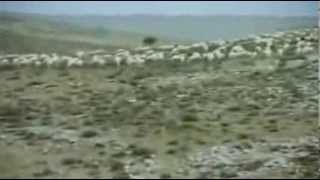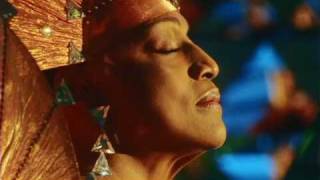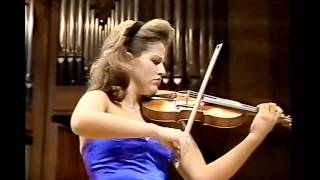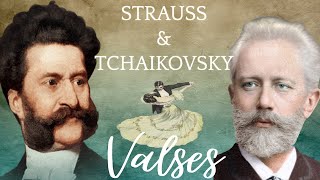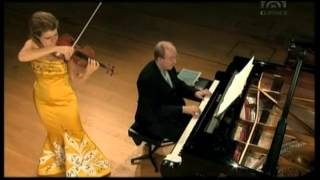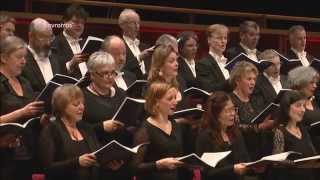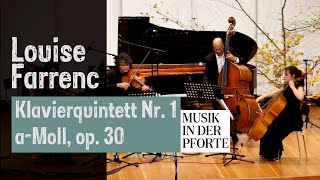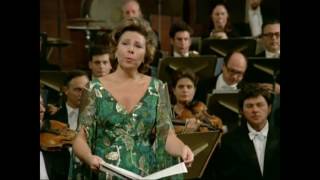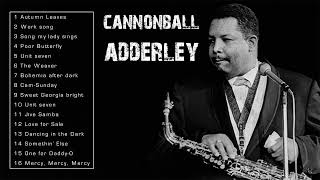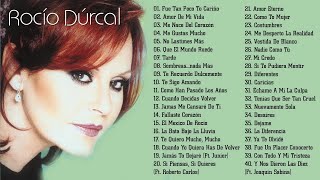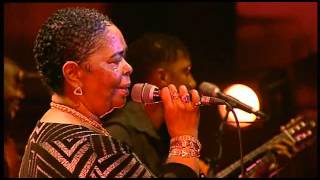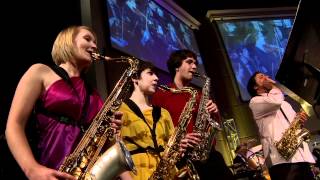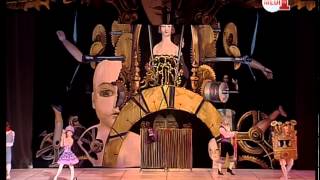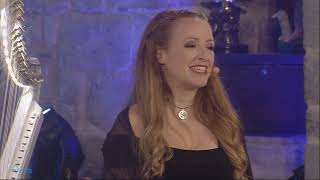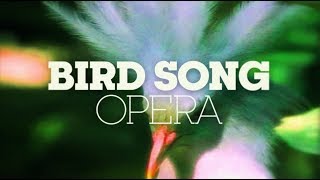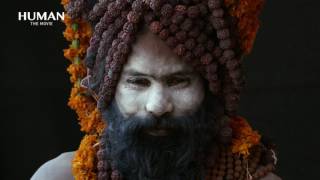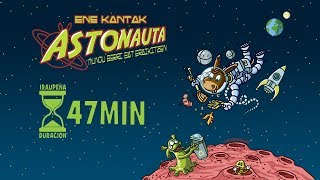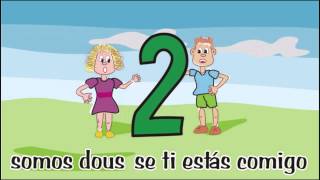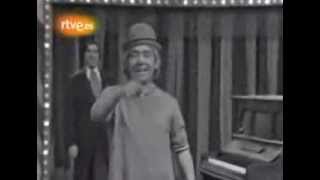Earth Day is celebrated on April 22.
Recommended music videos for initiation to classical music
Antón García Abril (1933-2021) was a Spanish composer and musician, author of orchestral music, chamber music, vocal works and soundtracks for films and television series. He was born in Teruel in 1933 and it was his father, a banda musician, who taught him music theory and also got him into his music band. "Then they bought me a piano and that's when I discovered another world." He began his music studies at the conservatories of Valencia and Madrid , after which he went abroad to complete his training. Between 1974 and 2003 he was Professor of Composition and Musical Forms at the Royal Conservatory of Music of Madrid . After receiving important national awards, he died on March 17, 2021 in Madrid , at the age of 87 from COVID-19.
Man and the Earth is a television series about nature, produced by Televisión Española and directed by the naturalist Félix Rodríguez de la Fuente . It was broadcast from March 4, 1974 to June 20, 1981 and repeated from March 12, 2009 to September 24, 2012. This series is a reference work for nature documentaries both in Spain and abroad. abroad —the series was distributed in several countries— and in its time, it inaugurated a new form of documentation. Today we present the music from the tune that opened the program composed by Antón García Abril .
Henry Purcell (1659-1695) is considered one of the greatest English composers in history. He wrote all kinds of choral and instrumental works, both sacred and profane, among which the opera Dido and Aeneas shines . After the death of his father and at the request of his uncle, he was admitted as a member of the choir of the Capilla del Rey where he would begin his first studies. At the age of 17 he was appointed assistant organist at Westminster Abbey; At the age of 23, he was appointed titular organist, from which point on, and for six years, he only wrote sacred works until, starting in 1689, he wrote different operas. In his work, the French and Italian influence can be appreciated within what would be a style of British Baroque . He died at the age of 36 at the height of his career.
Dido's Lament (Dido's Lament) is the name of the famous aria from the opera Dido and Aeneas composed by Henry Purcell , with a libretto by Nahum Tate ; it is also called " When I am laid in earth ". The Trojan hero Aeneas leaves the city of Carthage despite his shared love for Queen Dido . She, knowing that she cannot live without Aeneas , decides to commit suicide by immolating herself in a bonfire. Ironically, the path that Aeneas ' ship takes is illuminated by this fire. Dido says her last words to her loyal maid, Belinda , before she dies. The aria, written in the form of a Chaconne lament , is sung by a soprano (in the version we offer), a countertenor or mezzo-soprano.
Jessye Norman (1945-2019) was an American opera singer with a soprano range, possessing a powerful voice and imposing stage presence, both in opera and in concerts and recitals. She was considered one of the most popular and respected dramatic sopranos of her generation. He featured in the leading roles of the world's greatest operas, excelling particularly in works by Berlioz, Wagner , and Strauss 's lieder. In 1984, she won the Grammy Award for Best Classical Vocal Performance, the first of five Grammy Awards she would win during her career. In addition to several honorary doctorates and numerous important awards, he was a Fellow of the British Royal Academy of Music .
Ludwig van Beethoven (1770-1827) together with Bach and Mozart is part of the trio of giants of Western music. Born in Bonn , his father, of Flemish origin, tried to exhibit him as a second Mozart , but it was a notable failure. Despite this, from the age of nine, the organist Christian Gottlob Neefe captivated him with the study of Bach , whom he would always keep in mind. In 1787 he moved to Vienna with the intention of receiving Mozart classes, but the death of his mother brought him back to Bonn after a few days. And so after five years, he returned to Vienna where he was able to study with Haydn and Salieri . However, his profession as an excellent pianist could not be carried out due to the deafness that attacked him the following year until he was totally disabled from said faculty.
The Concerto is a musical form written for one or more solo instruments accompanied by an instrumental ensemble. It was Vivaldi who established the fundamental bases of its structure with three movements ( I fast-II slow-III fast ) and presented as a dialogue between the soloists and the instrumental ensemble. Starting from classicism, especially from the bases created by CPE Bach , the first movement is built following the patterns of the sonata form (exposure, development and re-exposition) , while the second and third movements adopt free and punctual forms. Frequently, at the end of the first and/or third movement, the soloists have a cadence without orchestral accompaniment with which they can show off their virtuosity.
Today we offer the third movement of the only concerto for violin and orchestra written by Beethoven in interpretation by the German violinist Anne-Sophie Mutter accompanied by the Boston Symphony Orchestra conducted on this occasion by the Japanese maestro Seiji Ozawa .
The waltz (from Germanism Walzer , a term from the German verb walzen , 'to turn, to roll') is an elegant ballroom dance, documented in its final form since the end of the 18th century . It is the evolution of an ancient dance from the 12th century , originally from Tyrol (Austria) and southern Germany . The waltz conquered its rank of nobility in Vienna during the 1760s, quickly expanding to other countries. Some authors believe that the waltz originated from the volte or volta , a 3-beat dance practiced during the 16th century . The word waltz was born in the 18th century , when this dance was introduced in opera and ballet. Its most significant feature is that its bars are 3/4 with the first strong beat and the second and third weak.
The best waltzes by Strauss and Tchaikovsky. I (0´00´´) BLUE DANUBE - (The blue danube) J. Strauss .-. II (7´58´´) WALTZ OF THE FLOWERS - (Waltz of the flowers) Tchaikovskky .-. III (14´48´´) VIENNA BLOOD WALTZ (Viennese blood, waltz) - J. Strauss .-. IV (21´36´´) TALES FROM THE VIENNA WOODS WALTZ (Tales from the Vienna woods, waltz)- J. Strauss .-. V (30´34´´) VOICES OF SPRING WALTZ (Voices of spring, waltz)- J. Strauss.-. VI (37´06´´) SERENADE FOR STRINGS IN C MAJOR (Serenade for strings)- Tchaikovsky .-. VII (40´45´´) EMPEROR WALTZ (Waltz of the emperor)- J. Strauss .-. VIII (43´46´´) SLEEPING BEAUTY WALTZ (Sleeping Beauty Waltz) - Tchaikovsky .-. IX (47´37´´) SWAN LAKE WALTZ (Swan Lake, Waltz) - Tchaikovsky
Recommended classical music videos
Wolfgang Amadeus Mozart (1756-1791) is considered one of the three giants of musical composition along with Bach and Beethoven . Child prodigy born in Salzburg , at the age of six he mastered the keyboard and the violin and began to compose. His father, Leopold exhibits him in exhausting tours of different European courts. A prolific composer (more than 600 works written from the age of five until his death), he cultivated all kinds of musical genres: piano works, chamber music, symphonies, concertante works, choral works, operas... each and every one of them, masterpieces of its gender. His operas The Magic Flute, Don Giovanni, Cosí fan Tutte, and The Marriage of Figaro are among the 10 most performed operas in the world. He died in Vienna at the age of 35.
At first , the Sonata was a composition written to be played or "sounded" by one or more musical instruments, just as the cantata was to be "sung" by one or more voices. Beginning with classicism (1750-1810) its definition is adjusted to a work generally structured in three movements (fast-slow-fast) and sometimes four, with or without a short introduction. Not to be confused with sonata form , which is a compositional model consisting of three sections without interruption: a) exposition of the two main and contrasting themes, b) development of both themes, c) restatement or recapitulation. The sonata form is normally applied to the first movements of sonatas, quartets, symphonies, and concertos .
Anne-Sophie Mutter (1963) is a German violinist who, at the age of thirteen, was invited by the conductor Herbert von Karajan to play with the Berlin Philharmonic Orchestra and the following year made her debut at the Salzburg Festival under the orders of Daniel Barenboim . She has been awarded important recognitions in Germany, France, Spain and Sweden and several Grammy Awards. Today she is considered one of the most eminent violinists. Today he offers us Mozart 's Violinsonate KV 547 accompanied on piano by his inseparable collaborator Lambert Orkis .
Franz Schubert (1797-1828) was an Austrian composer who at the age of 11 was admitted as a member of the choir of the Imperial Chapel in Vienna , where he was taught by Salieri . At that time, what brought money was the theater, the opera, a genre in which he never managed to excel; so he turned to lieder (songs), among which we must highlight his Ave Maria and the lieder ensemble La Bella Molinera . Despite dying at the age of 31, he left written more than 1,500 works including numerous piano and chamber music pieces, 8 symphonies, concertante works, incidental music, sacred music (among others, 7 Masses, 1 Oratorio and 1 Requiem). , several singspiel (small operettas), some opera and more than 600 small vocal works, mainly the aforementioned lieder.
Mass No. 6, D 950 (Mass No. 6), usually classified as Missa Solemnis is, is a mass composed by Franz Schubert , a few months before his death. It was composed in response to a request from Michael Leitermayer , choirmaster at Alserkirche Holy Trinity Church , Vienna. Beethoven 's influence is felt in the "ambitious choral and orchestral architecture"; while references to Bach 's fugues are present in the Gloria and the Agnus Dei . The present mass and the earlier one in A flat major are considered Schubert 's "late masses", distinguished from his first four masses by their "musically interpretive stance of words", plus that Schubert began to take advantage of a maturation in his technical skills along with his songwriting experience.
Structure of the Mass : I () KYRIE, Andante con moto, quasi Allegretto .-. II (5´38´´) GLORIA, Allegro moderato e maestoso .-. III (17´10´´) CREDO, Moderate .-. IV (30´45´´) SANCTUS, Adagio .-. V (34´02´´) BENEDICTUS, Andante .-. VI (39´07´´) AGNUS DEI. Today we can see it in a version by Christina Landshamer soprano, Marie-Claude Chappuis contralto, Maximilian Schmitt tenor, Sebastian Kohlhepp tenor, Florian Boesch bas together with the Grand Broadcasting Choir and the Radio Philharmonic Orchestra conducted by all of them. s by the Belgian master Philippe Herreweghe .
Louise Farrenc , (1804-1875) was a French composer, pianist and teacher, who studied piano with Anne Soria , then with Antoine Reicha , a professor at the Paris Conservatoire , who taught her musical writing (harmony, counterpoint). and later with Ignaz Moscheles and Johann Nepomuk Hummel . Farrenc taught piano at the Paris Conservatoire , where he ended up receiving a salary equal to that of his male peers. On the other hand, he received the support of the best musicians of his time, such as the violinist Joseph Joachim and twice received the Chartier Prize of the Institut de France , intended to reward the best chamber music compositions, in 1868 and 1869. She died on September 15, 1875 and was buried in the Montparnasse Cemetery.
Klavierquintett No. 1 . Of the two quintets for piano and string quartet that Farrenc wrote, today we are pleased to offer you No. 1 structured in four movements: I (0´02´´) ALLEGRO (written in sonata form , beginning in A minor and ending in The biggest) .-. II (11´30´´) ADAGIO NON TROPPO (written in E major and in the form "ABACABA" with an additional coda) .-. III (17'48'') SCHERZO. Presto (written in A minor and in ternary form, with a " Trio " section in A major).-. IV (21'20'') FINAL. Allegro (written in sonata form in A minor).
Today we offer it in a version by Berit Cardas violin, Klaus Christa viola, Bjørg Værnes Lewis violoncello, Leon Bosch double bass and Akiko Shiochi piano.
Gustav Mahler (1860-1911) was an Austrian composer and conductor born in Kaliště , present-day Czechia , regarded as one of the most eminent composers of Post-Romanticism. His creative work focused on the symphony, the lied (lyric song) and the conjunction of both concepts; to this must be added the diversity of elements with which he worked (popular, military melodies, fanfares of various kinds...) the manifest dissonances to which the public was not accustomed and the long duration of his symphonies; If we add to this that he faced a certain anti-Semitic press due to his Jewish origins, it is not surprising that his compositions did not have the success they deserved in life.
Das Lied von der Erde (The Song of the Earth) is a cycle of songs (lied) in the form of a symphony, a large-scale work for two vocal soloists and orchestra written by the Austrian composer Gustav Mahler and structured in six movements: I (0´00´´) DAS TRINKLIED VON JAMMER DER ERDE (The Bacchic song of earthly misery) .-. II (8:35) DER EINSAME IM HERBST (The solitary in autumn) .-. III (19´05´´) VON DER JUGEND (Of Youth) .-. IV (22:15) VON DER SCHÖNHEIT (Of Beauty) .-. V (30´04´´) DER TRUNKENE IM FRÜHLING (The drunkard in Spring) .-. VI (34´32´´) DER ABSCHIED (The farewell).
Today we offer it in a version by mezzo-soprano Christa Ludwig and tenor René Kollo accompanied by the Israel Philharmonic led by maestro Leonard Bernstein .
Recommended music videos for all tastes
Cannonball Adderley (1928-1975) was a jazz saxophonist, stylistically framed in hard bop and soul jazz . Musically, his first job was as a youth bandleader in Florida . During a trip to New York in 1955, he joined bassist Oscar Pettiford 's group. In 1957 he joined the quintet of trumpeter Miles Davis ; a year later he participated in the recording of one of the most important records in the history of jazz, Kind of Blue , with Davis, Chambers, Coltrane , as well as Jimmy Cobb on drums and Wynton Kelly and Bill Evans on piano. In 1958 he recorded the album that will leave his name as a jazz leader in history: Somethin' Else , an album with a deluxe quintet that included Davis on trumpet, Hank Jones on piano, Sam Jones on bass and Art Blakey . on the percussion
Rocío Dúrcal (real name María de los Ángeles de las Heras Ortiz , 1944-2006) was a Spanish singer and actress. As a singer, she specialized in various musical genres, but it would be thanks to ranchera music that her career would gain greater recognition and exposure until she became known as La Reina de las Rancheras . In 1977 he met the Mexican composer and singer Juan Gabriel and decided to record an entire album with his hits in ranchera rhythm, which obtained great success that would not cease with subsequent recordings. Her albums managed to position themselves with great success within the music industry, becoming one of the Spanish-speaking singers with the highest sales within it. In 2005, a year before his death, he received the Latin Grammy for musical excellence.
Cesária Évora (1941–2011) was a Cape Verdean singer known by the nickname "the Queen of Morna" and as "the barefoot diva", due to her custom of appearing barefoot on stage, in solidarity with the sinners. roof and the poor women and children of his country. She began singing in bars and hotels at the age of 16 telling us about the country's long and bitter history of isolation and the slave trade, as well as emigration, as the number of Cape Verdeans living abroad is said to be greater than the total population of the country. In 2004, he won the Grammy Award for Best Contemporary World Music Album for Voz d'amor . In 2007 French President Jacques Chirac awarded him the Legion of Honor medal .
Dámaso Pérez Prado (1916 - 1989), known as the "King of Mambo", was a Cuban musician, composer and arranger who was a Mexican national. He studied music in his native Cuba and worked in various orchestras in Havana in the 1940s. A skilled pianist and a thorough connoisseur of the keyboard, he has been considered by critical experts as one of the best in this genre of popular music. He is known above all for his contributions to the mambo genre, which has its origins in the Cuban danzón and which would lead the rise and development of the chachachá , as well as the music that emerged at the end of the 1950s and was later known, since early 1970s as salsa . He was not the creator of the rhythm, which was already being played in Havana at the end of the 1930s, but he was its greatest disseminator internationally.
Today we are visited by the New Brunswick Youth Orchestra under the direction of Antonio Delgado with the Mambo potpourri by Pérez Prado .
Recommended peculiar videos
Léo Delibes (1836 -1891) was a French romantic composer. His mother was a musician and his grandfather an opera singer. His nephew Frédéric was the paternal grandfather of the Spanish writer Miguel Delibes . He began his musical studies at the Paris Conservatoire in 1847, where he was a student of Adolphe Adam . As a composer, he achieved real fame in 1870 with the success of his ballet Coppélia; Among his other ballets, Sylvia , written jointly with Léon Minkus ; the Pizzicato of this ballet is very popular, one of Delibes ' greatest successes. He also composed several operas and operettas, a mass, a cantata, and occasional music for the theater, such as dances and ancient airs.
Coppélia is a sentimental and comic ballet, in three acts, with original choreography by Arthur Saint-Léon to a ballet libretto by Saint-Léon and Charles Nuitter and music by Léo Delibes . It is based on a macabre story by ETA Hoffmann entitled Der Sandmann (The Sandman). The ballet premiered on May 25, 1870 at the Paris Opera . The story is about a mysterious inventor, Doctor Coppélius , who has a life-size dancing doll. She seems so real that Franz , a villager, falls in love with her, leaving behind his true love, Swanilde , who in Act II shows him her madness, by dressing up as a doll and pretending to come to life. Today we offer the complete version choreographed in interpretation of the Great Classical Ballet of Moscow .
The magical and versatile soprano voice of Maite Itoiz , along with the enchanting voice of John Kelly , accompanied by their own instruments; Celtic harp, flutes, rebec, guitars, Basque instruments, poetry and a select repertoire full of magic and ancestral tradition.
Aralar , one of the most mysterious places in Euskal Herria , in the mountains of the old kingdom of Navarra , surrounded by spectacular nature, megaliths and legends of dragons and angels, there is an ancient temple built on a cave; San Miguel de Aralar was chosen by the EITB Basque Television to film a complete concert by Maite Itoiz & John Kelly . The large numbers of audiences encouraged the release of this record, with the ancestral Basque as the central point, also sharing the spotlight with the wonderful Sephardic music, the English Renaissance, Breton folklore and his own compositions. As guests, the successful author Toti Martínez de Lezea reads excerpts from her books, and the musician Ivan Allué plays txistu, txalaparta and bagpipes, creating a unique atmosphere. (comment at the foot of this video)
ShakeUp Music recomposed the Magic Flute duet "Papageno/Papagena" into a colorful Mozart bird aria. Listen to an audiovisual Twitter storm performed by our feathered companions. (Extracted from the comment at the foot of this video)
"... The idea with Human was to create songs that reflected the same emotion generated by the interviews. I wanted things to open up, for the heart to open up, for the sadness to be unbridled. Human has been one of those rare moments where my life as a film composer during which I was able to express all these different cultures at the same time: either working on minimalist songs or meeting these singers and musicians who come from all over the world. Which note did I produce first? I had more in mind a global vision, an atmosphere that would merge with the film and bring people together, this was my starting point, the part I created for the Mongolia sequence (21´25´´) could be the best summary of the atmosphere that I wanted the film to have…” Armand Amard , composer of Human Music .
I (0´27´´) Faces .-. II (4´33´´) Flamencos .-. III (6´18´´) Dim .-. IV (8´00´´) Dam in China .-. V (10´46´´) Sorry .-. VI (12´20´´) Castells .-. VII (15´14´´) Nepal .-. VIII (17´33´´) Rice fields .-. IX (21´25´´) Mongolia .-. X (25´10´´) Human Storm .-. XI (29´00´´) Shakuhachi .-. X (33´) Plowing .-. XI (36´) Effort .-. XII (39´26´´) Immigration .-. XIII (45´35´´) Haiti .-. XIV (48´10´´) Pepe Mujica .-. XV (51´40´´) The Hidden Church .-. XVI (55´10´´) Childhood .-. XVII (59´48´´) Swimming in China .-. XVIII (1h 04´46´´) CODA Human I
Recommended music videos for children
Various Wikipedia articles have been used to write these texts.
The texts of Videomusicalis are written in Basque, Spanish and English.





